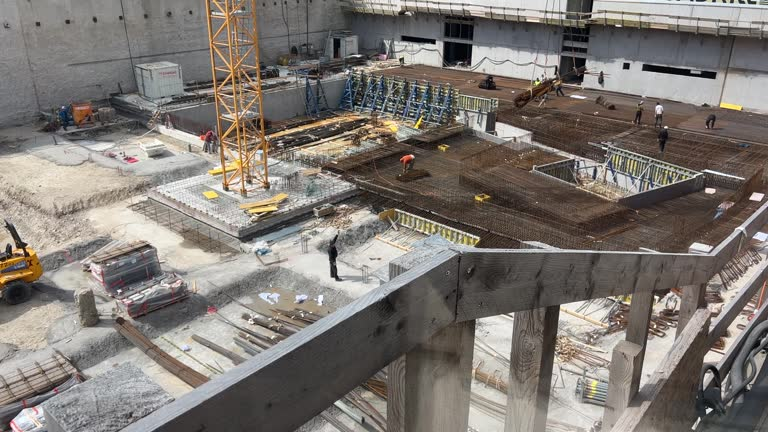
ADTO News
A Complete Overview of the Formwork Construction Process
In the construction world, formwork is a crucial element that provides the necessary support and structure for concrete pours. Understanding the formwork construction process is essential for ensuring the integrity and quality of your projects. Here’s an in-depth look at the formwork construction process and how it can benefit your construction efforts.

1. What is Formwork?
Formwork refers to the temporary or permanent molds used to shape and support concrete until it hardens. It is essential for creating various structures, including walls, slabs, and columns. The right formwork system ensures that the concrete maintains its intended shape and strength.
2. Planning and Design
The first step in the formwork construction process is careful planning and design. This involves assessing the project requirements, including dimensions, loads, and materials. Choosing the right type of formwork—whether timber, metal, or plastic—is crucial for achieving the desired results.
3. Material Selection
Selecting high-quality materials for formwork is vital. Here are some common materials and their specific applications:
Timber Formwork
Application: Used for residential buildings, small structures, and decorative elements.
Advantages: Cost-effective, easy to work with, and suitable for complex shapes.
Steel Formwork
Application: Ideal for large commercial and industrial projects, such as high-rise buildings and bridges.
Advantages: Highly durable, reusable, and provides excellent surface finishes.
Aluminum Formwork
Application: Common in residential and commercial construction, especially for large-scale projects.
Advantages: Lightweight, easy to handle, and allows for quick installation.
Plastic Formwork
Application: Suitable for small to medium projects, including precast concrete elements.
Advantages: Moisture-resistant, lightweight, and reusable, making it environmentally friendly.
Fabric Formwork
Application: Often used for innovative architectural designs and complex shapes.
Advantages: Flexible, lightweight, and allows for unique concrete finishes.
4. Assembly of Formwork
Once the design is finalized and materials are selected, the next step is assembling the formwork. This involves constructing the framework that will hold the concrete in place. Proper assembly is crucial, as any misalignment can lead to structural issues in the final product.
5. Installation and Support
After assembly, the formwork must be installed and supported securely. This step includes ensuring that the formwork is level, braced, and adequately supported to handle the weight of the concrete. Proper installation minimizes the risk of deformation or failure during the pouring process.
6. Pouring Concrete
With the formwork in place, it’s time to pour the concrete. This stage requires careful monitoring to ensure that the concrete is poured evenly and without air pockets. Proper pouring techniques help achieve a smooth finish and optimal strength in the final structure.
7. Curing and Removal
After the concrete is poured, it must be cured properly to ensure strength and durability. Once the concrete has set and achieved sufficient strength, the formwork can be removed. Timing is crucial here, as premature removal can lead to damage.
8. Quality Control
Finally, conducting quality control checks after formwork removal is essential. Inspecting the finished structure for any defects or inconsistencies helps ensure that the project meets the required standards and specifications.
Conclusion
Understanding the formwork construction process is vital for achieving successful concrete structures. From planning and material selection to installation and quality control, each step plays a critical role in the overall success of your project.
As a leading provider, we offer a wide range of formwork systems designed for durability and efficiency. Contact us today to discover how our products can enhance your construction projects.


 Live Chat
Live Chat
